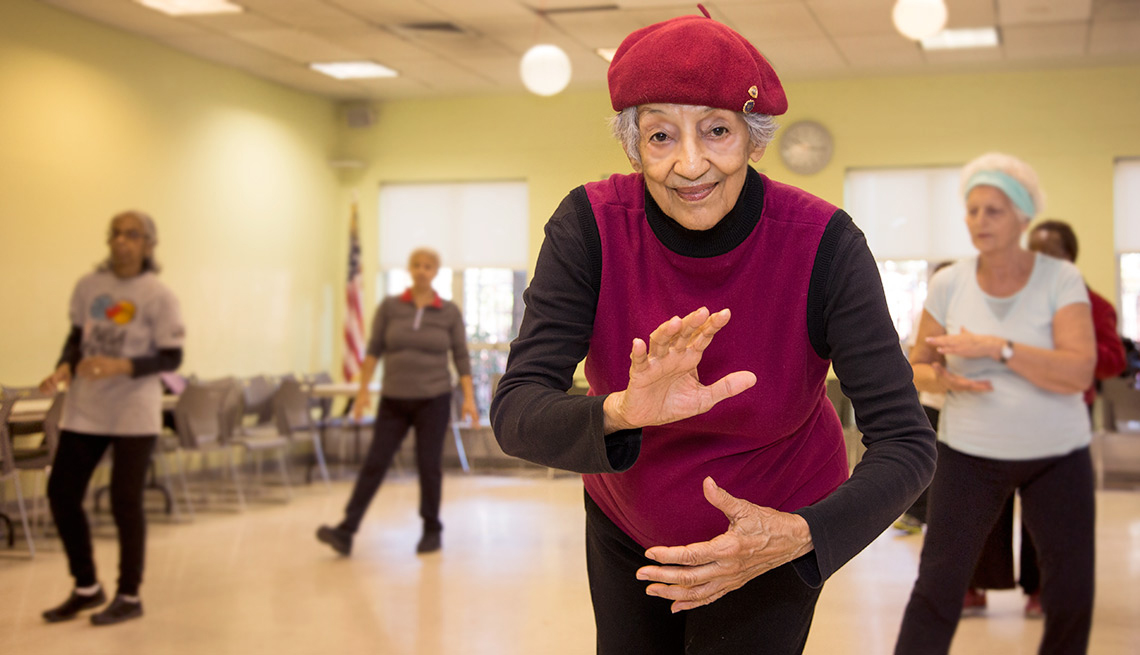AARP Eye Center

By Ann Levin
Midalma Gonzalez goes to the Stanley M. Isaacs Neighborhood Center in Manhattan several times a week for exercise classes and lunch. But over the past 18 months, ever since she had a small stroke, she’s had difficulties. With arthritis, memory problems and the beginnings of macular degeneration, she needs help with laundry, housekeeping, shopping and transportation.
Gonzalez, 86, can’t afford to pay for most of these services, but her monthly income—like that of many older people in New York City—is over the limit for Medicaid, the federal-state health insurance program for the poor and disabled.
But Gonzalez, a lively woman who uses a walker to navigate the three blocks from her subsidized apartment to the center, might be eligible for Expanded In-home Services for the Elderly (EISEP), a state program for older adults who need help with activities of daily living and have incomes above the Medicaid limit. Thousands of people around the state are waiting for EISEP and other home- and community-based services.
“EISEP is a great program. I have so many people here who could benefit from EISEP,” said Nancy Hernandez, Gonzalez’s caseworker at the Stanley Isaacs center. “There is a tremendous need for home care. There are only three options: EISEP, private pay and Medicaid.”
When the Legislature convenes next month, AARP New York will be lobbying for an additional $25 million to clear statewide waiting lists for EISEP and other programs for older people, such as transportation services and Meals on Wheels.
“We have had success in the last couple of budgets getting money for these services,” said Bill Ferris, AARP New York state advocacy director.
“But there are approximately 9,700 people on waiting lists. The help these services provide relieves the burden for the recipients’ caregivers, many of whom will burn out if they don’t get assistance with some of these tasks and may send Mom and Dad to the nursing home.”
AARP is also looking to Gov. Andrew Cuomo (D) and legislative leaders for an additional $30 million for respite services—including adult day programs, temporary overnight care and caregiver support groups—to ease the burden on caregivers looking after an older relative or friend at home.
“Caregivers are the backbone of the long-term care system,” Beth Finkel, state director for AARP New York, wrote in a letter to the Cuomo administration. There are nearly 2.6 million caregivers in New York who provide 2.4 billion hours of care each year worth $31.3 billion.
Other initiatives
AARP supports several other initiatives to help caregivers, including proposed legislation that would give workers up to 12 weeks of paid leave to look after a newborn or ailing relative. In 1993, President Bill Clinton signed into law a bill providing 12 weeks per year of unpaid, job-protected leave for many working families, but there is no federal paid-leave law.
“Access to paid family and medical leave provides health and economic benefits for the employee and the employer,” Ferris said. “Paid family leave can improve workers’ quality of life and benefit those they care for. This legislation would give employees peace of mind and some financial stability while they’re taking care of loved ones.”
California, New Jersey and Rhode Island have already passed paid family leave laws, and other states are considering similar legislation.
Another initiative supported by AARP New York: the Advanced Home Health Aide Program, which would allow properly trained and certified home health aides to perform certain tasks, such as administering eye and ear drops and other medications, that now can be done only by a registered nurse or family caregiver.
AARP New York also is looking to state leaders to adopt an employer-based retirement plan that would use payroll deductions for workers whose employers do not offer a retirement plan.
More than half of the state’s private-sector employees—roughly 3.5 million workers—do not have the option of a retirement savings account at work, according to a report by AARP’s Public Policy Institute.
Ann Levin is a freelance writer living in New York City.























































